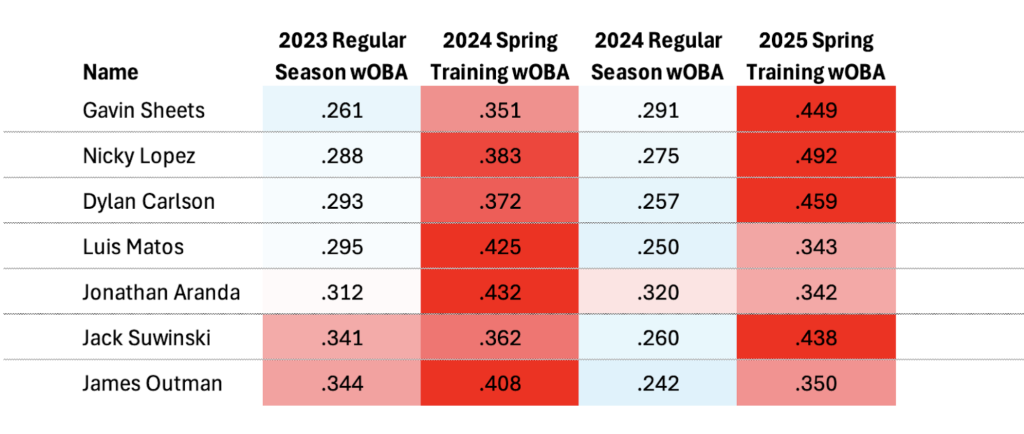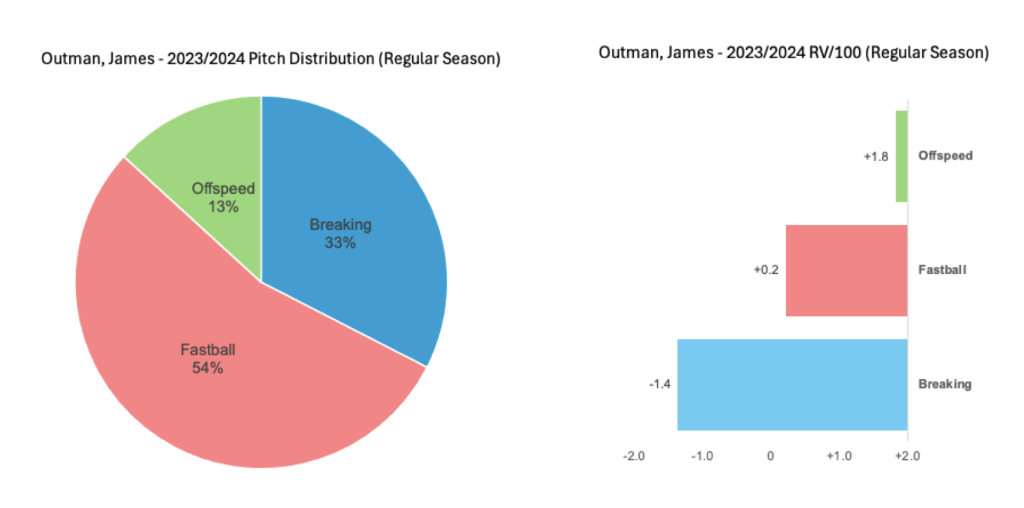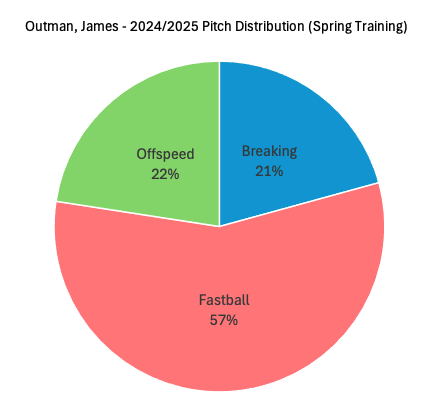If you’re in a bowling league, you wouldn’t expect people to track how good you’ll be in actual competition based on what you rolled just messing around with your friends. Yet, in the world of baseball, we attempt to keep track of wOBA and wRC+ for the 28~35 games that don’t even count. Seriously, pitchers can come out of games and go in the next inning, managers will decide to play the bottom of the 9th even if they’re losing depending on some young guy they want to see pitch or hit. It can’t be emphasized enough that these stats that some people use to predict the future are tracked in a non-competitive environment.
Within this non-competitive environment are players who seem to thrive. Maybe they’re the ones who play pickup basketball with their 12 year old nephews and dunks on them, maybe they tell you no rushing in Star Craft, then immediately send a swarm of zerglings before you build your first pylon. No matter the case, here are examples of 7 players over the last few seasons who have consistently excelled in spring training while struggling when it actually counted:

Players who do well doing ST and not so much during regular season
The prevailing theory is that these hitters are not only playing in a non-competitive environment, but they’re also facing lesser competition. Not just in the sense that these pitchers play for minor league teams, but also that many of them may not even be prospects that are going to develop into major league players someday. However, I want to present another angle to this; and that is how these players are attacked (or not attacked) by pitchers in spring training. Picture the preparation that coaches and analytics departments perform preparing for a regular season game. Front offices are not preparing for a Grapefruit League game the same way, saying “How do we make sure Jack Suwinski does not hurt us in this split squad game in Fort Lauderdale.”
To validate this theory, I took the data for every pitch these batters saw during the 2023-2024 regular season, calculated the pitch type that had the highest run value created off of (using RV/100), and compared to how often they saw their favorite pitch types during spring training. The idea here is that normally if a hitter crushes a breaking ball, you would expect that pitcher to see fewer breaking balls, but during spring training that same warning may not be issued to pitchers, not that they care since the games don’t count.
For example, here’s the pitch distribution and RV/100 by pitch category for James Outman over the last 2 seasons:

The % of pitches James Outman has seen the last 2 seasons and the Run Value he generates from them
The RV/100 graph on the right is counter-intuitive because the biggest bar is the most negative pitch category, but essentially it says James Outman has been dangerous against offspeed pitches, and not very good against non-offspeed pitches, which is why he only sees them 13% of the time over the last two years. Meanwhile, during the spring training, he sees offspeed pitches 22% of the time:

Percentage of pitches Outman has seen during Spring Training in 2024/2025
Examining other players closely will show similar patterns, where these hitters will see kinds of pitches they destroy that they don’t get as much during the regular season (pitches high in the zone for Gavin Sheets, low fastballs for Luis Matos, etc.). Ultimately this is just another wrinkle to what makes spring training performance stats not useful for fantasy evaluation purposes, and another reason why new stats like swing metrics (which I covered in this post) are more important to look at during these March games in Arizona/Florida.


